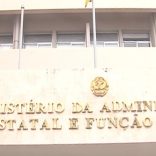CPLP: Outgoing AfDB chief pleased with successes in Portuguese African nations
Interview: It would be useful for Mozambique to restructure debt by June 2019 – Moody’s

File photo
Moody’s chief analyst for Mozambique told Lusa today that “it would be useful” for the government to complete negotiations with creditors by the end of the first half of next year.
“From the government’s point of view, restructuring debt by the end of this year or the first half of next year would be useful, because the sooner the executive begins to receive gas revenues, the more difficult it will be to impose losses on creditors,” Lucie Villa argued.
In an interview with Lusa on the subject of Moody’s Current Credit Analysis, the senior analyst for Mozambique said that “debt restructuring negotiations are likely to be completed in the first half of 2019”.
At stake is the executive’s response to the latest creditors’ proposal, presented in early August, which comes in response to the proposal the finance minister made in London in March during a presentation to holders of nearly US $ 730 million in Mozambique public debt securities whose repayment instalments Mozambique has not paid since 2016.
Asked about the outcome of the negotiations and the amount of losses for creditors, Villa replied: “Our expectation of losses has to do with the bargaining power of each party to the negotiation, but it is very difficult to guess who has the most power” .
Still, she added, “lenders have a reason to accept losses, because that way they guarantee getting the restructured amount”.
Moody’s base scenario for Mozambique’s public debt restructuring points to a loss of around 35%, but the analyst put the number in perspective, saying that “debt restructuring implies losses for creditors of almost 50%, on average, but there have been cases of losses ranging from 15% to 80%, as in the case of Greece”.
On the Mozambican economy, which Moody’s expects to grow by 3.5% this year, the analyst says : “The medium-term outlook is better now, also but not only because projects in liquefied natural gas are more tangible.”
“Production will start in 2023 and there have been positive developments, with advances in final investment decisions, and all of this combined makes the outlook more positive,” she said, “but from a budgetary point of view, little has changed”. “Management of gas revenues will be very important for the evolution of Mozambique’s rating.”
Mozambique’s credit profile, according to Moody’s analysis, is Caa3 with a Negative Evolution Perspective, that is, it is in default, and “reflects the expectation that the default event that the Government is currently facing will result in substantial losses for private lenders, which may exceed the base scenario”.
Public sector debt exceeds 100% of GDP, and the executive’s access to external financing in foreign currency “is extremely limited,” Moody’s writes in the report, pointing out also as negative factors for the country the “extremely weak institutional framework” and the Government’s lack of willingness to prioritise debt payments, as well as other known weaknesses in the country in terms of skilled labour and vulnerability to weather events, among others.
Moody’s acknowledges that Mozambique will receive large tax revenues from gas investments from 2023 onwards, “which will support public finances, economic growth and the balance of payments”, but points out that “the agreement of the National Hydrocarbons Enterprise (ENH) to fund participation in gas projects is likely to increase the already high levels of public debt”.
Moody’s expects the economy to grow by 3.5% this year and next year, with a possibility of reaching 4% a year “if progress on gas project implementation is faster than expected”. The IMF forecasts growth of 10% in 2023, when the projects are in full swing.
The Moody’s analysis reveals that “public-debt-to-GDP ratio should continue to fall due to high nominal growth, with the metical remaining stable against the US dollar at 60 meticais and, therefore, with limited impact on debt”.
The fiscal policy outlook from Moody’s is that debt will continue to rise because of the predictable accumulation of budget deficits. At the end of last year, public debt was at 81% of GDP, according to IMF figures cited in the report, which anticipates a rise in public sector debt to a peak of nearly 150% in 2022.
“Public sector debt is expected to continue to rise, fuelled by rising public and private sector debt,” the Moody’s report concludes.













Leave a Reply
Be the First to Comment!
You must be logged in to post a comment.
You must be logged in to post a comment.